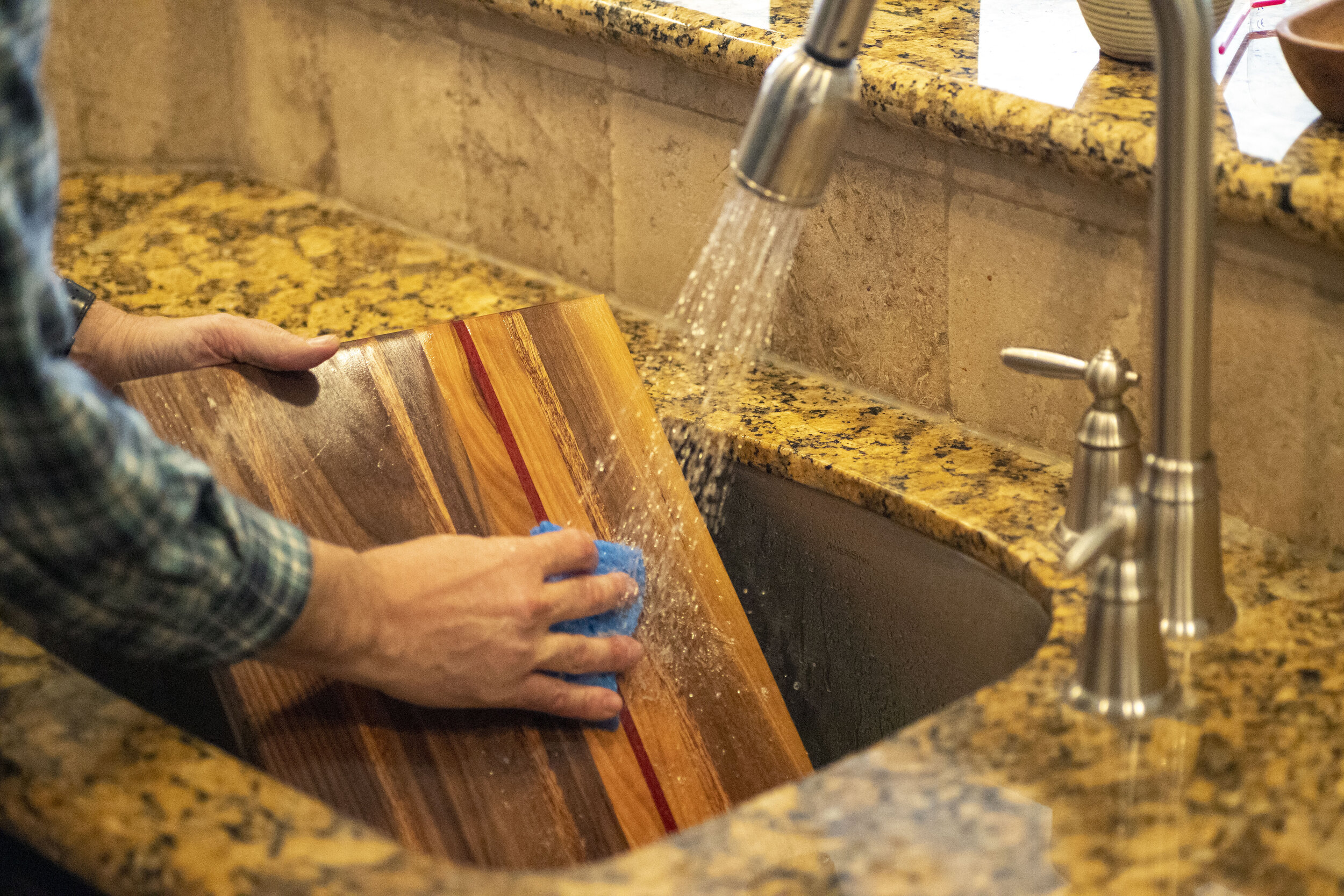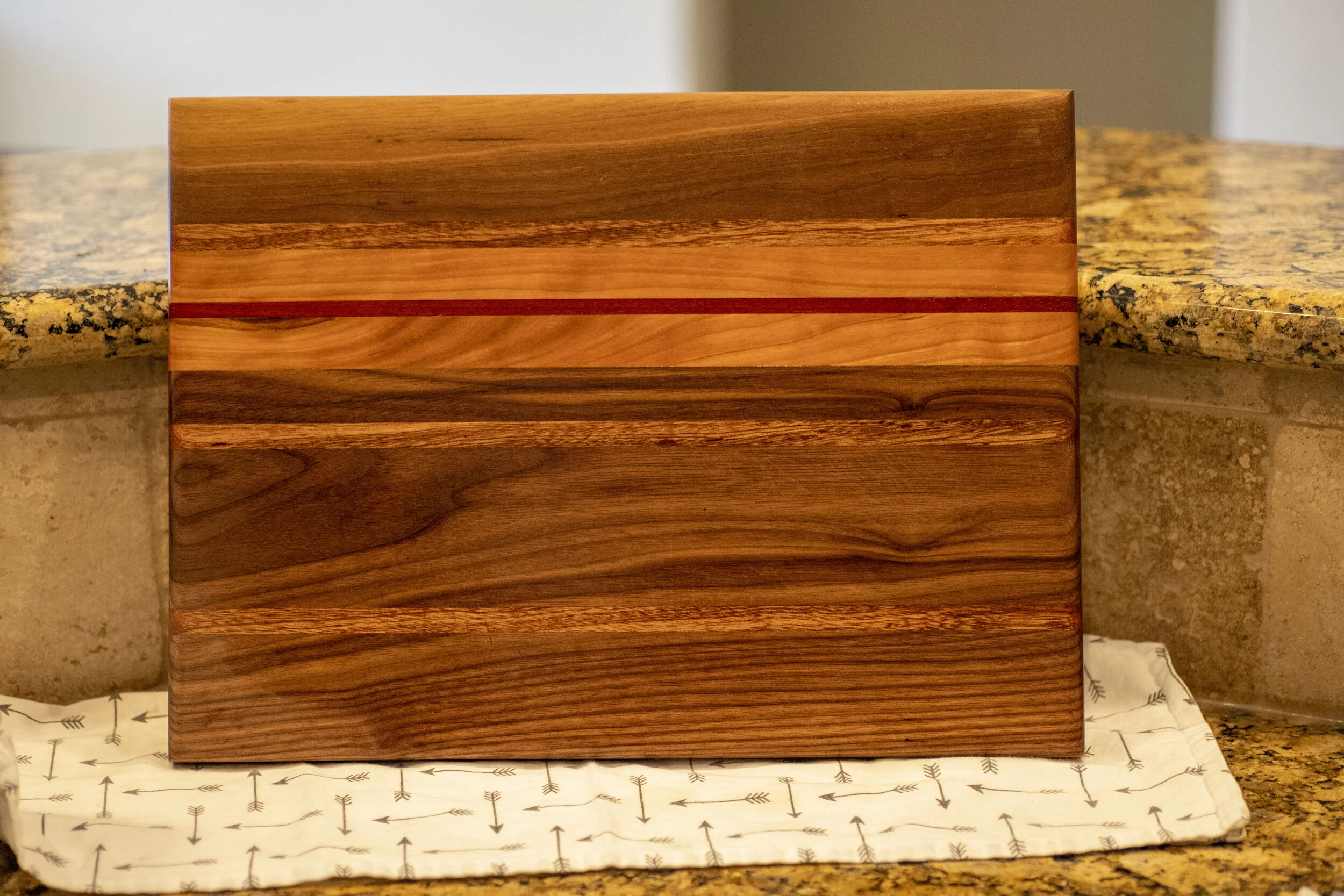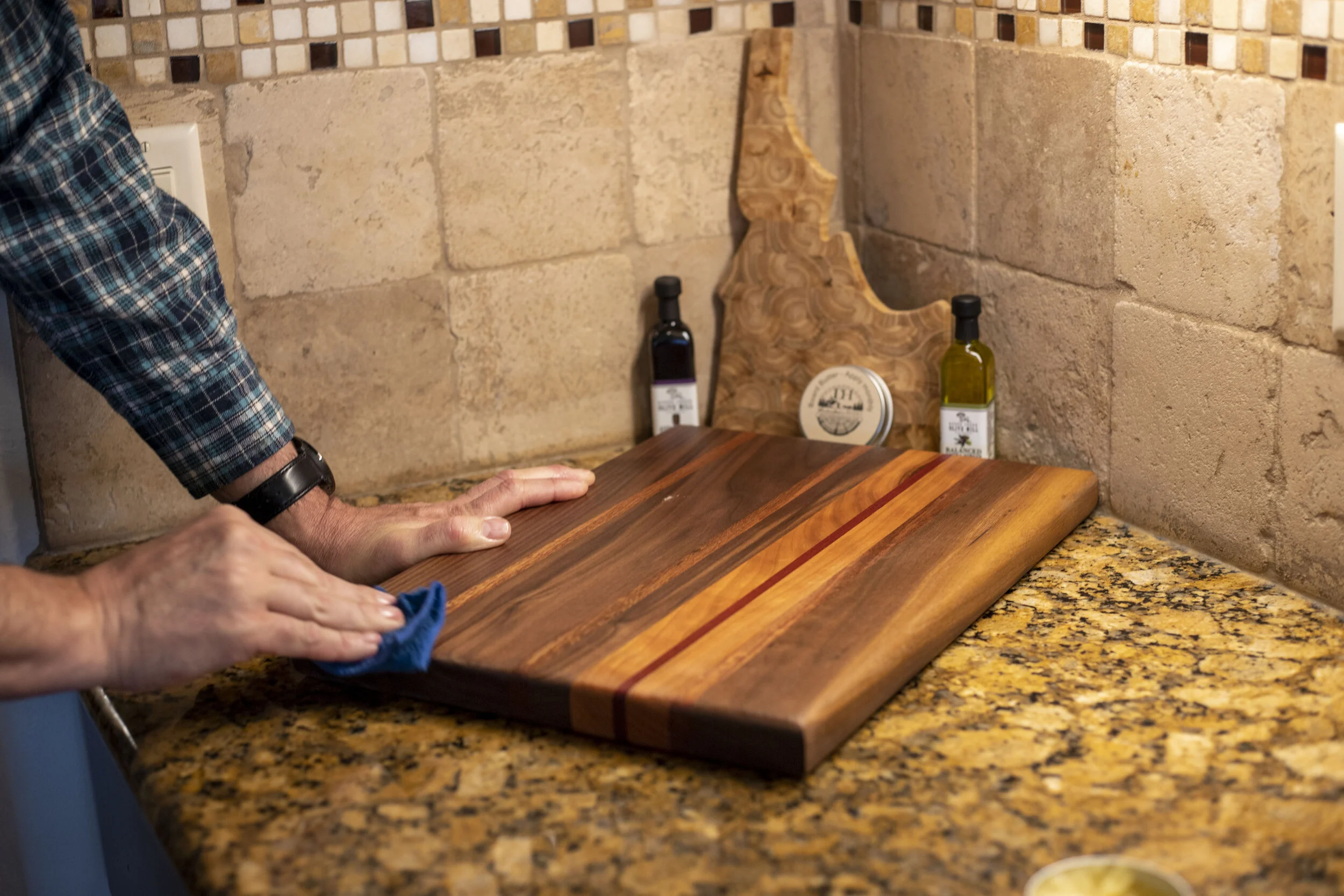Cutting Board Maintenance
Maintaining your cutting board is simple once you know how. The following steps will guide you through maintaining your cutting board to keep it sanitary and looking good for many years to come.
Proper Cleaning and Washing
Wash your cutting board with warm water and soap and scrub well. Using a high volume of water and scrubbing is more important than the soap as the water is flushing any food or bacteria off of the board under the running water. After washing, IMMEDIATELY towel dry and place on a wire rack or on it’s edge to dry thoroughly.
Drying and Storage
Always towel dry your cutting board after washing and place on it’s edge to dry thoroughly. This allows your board to dry evenly and prevents many issues that arise from excessive moisture trapped in the board.
Apply Board Butter
Board Butter is a mixture of food safe mineral oil and bees wax. The bees wax we use is sourced locally from bee keepers and helps to seal and condition your cutting board. Just like your skin, a cutting board needs some moisturizing from time to time. In general, when your board starts to look dry (or monthly) apply a light coat of Board Butter to keep your cutting board looking like new. This applies to any cutting board you may already have as well, rub in some Board Butter and see the difference.
Other important notes.
DO NOT
Put the board in the dishwasher. The heat and long exposure to water will warp and splinter the wood and VOID any warranties. The only cutting boards suitable for the dishwasher are plastic, composite or glass boards. This is true for ALL cutting boards.
Submerge/dunk/let sit in any type of standing water or liquid. The wood will absorb the water and lead to potential warping
Use bleach, this may stain the wood and will excessively dry the wood.
Put a wet cutting board flat to dry. When a wet cutting board dries on one side, it can cause the wood to warp.
How to apply Board Butter
Once your cutting board is clean and completely dry, apply directly to the surface of the cutting board. Be generous with the product and rub/buff it into the board paying attention to the sides and edges. If you are reconditioning an older board, you may need to repeat the process. We recommend you reapply every month or so (depending on use).
Use it often
If you purchased your cutting board as a display piece, that is fantastic and we love that you see this item as a fine piece as art. If you bought your board to use…use it! Different woods age over time and some woods, such as American cherry, change color over time as they age and season it’s always interesting to watch this process over time.


